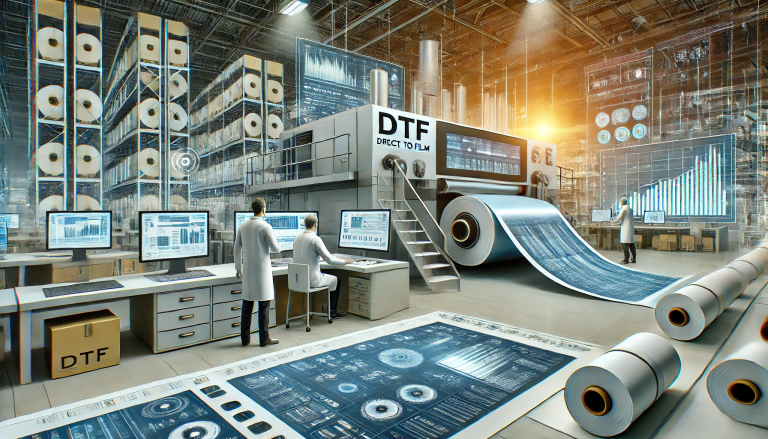“Direct to Film Printing Process: The Future of Textile Printing” -MAXDTF- China UV DTF AB Paper, UV DTF Paper Manufacturer, Made in China
Welcome to the world of textile innovation, where advancements are consistently being made to improve the quality, efficiency, and sustainability of fabric design and production. One of the most groundbreaking processes to emerge in recent years is the Direct to Film (DTF) printing process. In this article, we’re diving deep into what DTF is, its benefits, and why it could be the next big thing in the textile industry.
What is Direct to Film (DTF) Printing?
Direct to Film (DTF) is a digital printing method that involves transferring a design directly from a printed film onto a substrate, typically a textile. Unlike traditional direct-to-garment (DTG) methods, which print directly onto the fabric, DTF prints onto a film that is then transferred to the desired material.
Here’s a basic breakdown of the process:
- Design Creation: As with all digital printing, it starts with a design. This design is digitally rendered and prepared for printing.
- Printing Onto Film: The chosen design is then printed onto a special film using DTF inks. These inks are known for their durability and vibrancy.
- Application of Adhesive Powder: Once printed, an adhesive powder is applied to the inked side of the film. This ensures the design adheres properly to the fabric.
- Heat Press Transfer: The film, with the adhesive powder, is then placed on the textile and run through a heat press. The heat facilitates the transfer of the design onto the textile.
- Final Cure: To ensure durability and longevity, the printed fabric goes through a final heating process to properly set the ink.
Why is DTF Printing Gaining Popularity?
There are several advantages to the DTF method, including:
- Versatility: It can be used on a wide variety of fabrics, from cotton to synthetic materials, without compromising the integrity of the design.
- Vibrant Colors: DTF inks produce vivid, rich colors that maintain their brilliance even after multiple washes.
- Eco-friendly: The process can be more sustainable, as it reduces water usage and waste compared to traditional textile printing methods.
- Soft Hand Feel: Unlike some printing methods which can leave a noticeable ‘hand’ or texture, DTF prints tend to be softer, allowing for a more comfortable garment.
- Durability: Designs printed using the DTF process resist fading, peeling, or cracking over time.
- Streamlined Process: Eliminating some pre-treatment steps found in DTG, DTF can be faster and more efficient for certain production setups.
Challenges to Consider
While DTF offers numerous benefits, it’s essential to note that it may not be suitable for all production scenarios. The initial investment in equipment can be substantial, and, like any technology, there’s a learning curve involved. Furthermore, the quality of consumables like inks and films plays a pivotal role in the final output.
Conclusion
The Direct to Film printing process is undoubtedly an exciting development in the world of textiles. Its potential for producing high-quality designs on a range of fabrics, combined with its sustainability benefits, makes it an attractive option for brands and manufacturers looking to stay at the forefront of the industry. As with any technology, it’s essential to weigh the benefits against the potential challenges to determine if DTF is the right fit for your needs.



